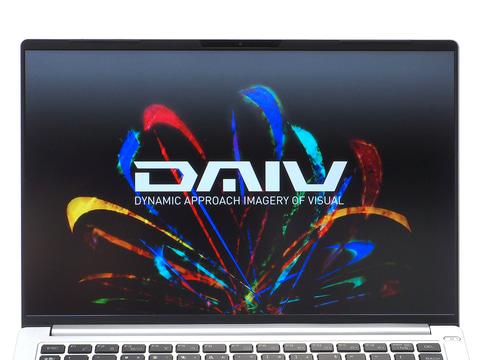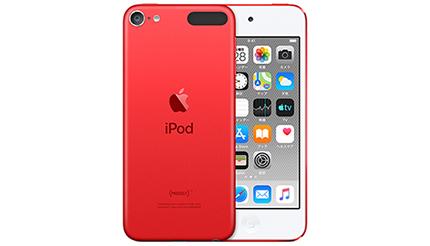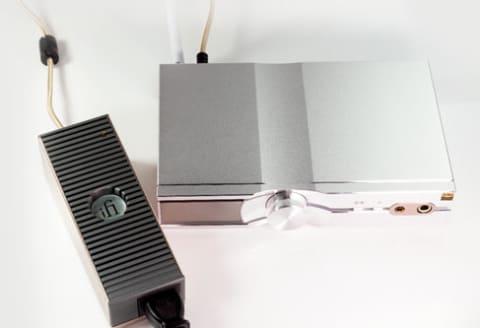Photo: Impress Watch

The Windows 11 serialized model of the 14-inch mobile notebook "DAIV 4P" sold by the mouse computer creator brand "DAIV" has been released. The standard price is 153,780 yen, but it will be 139,480 yen due to the sale until 10:59 on March 16. [See another image about this article] DAIV 4P realizes compactness and thinness of 308.8 x 213 x 16.4 mm (width x depth x height), and weighs less than 1 kg at 985 g, so you can actually carry it with you. It's very light even if you look at it. In addition, 4G LTE is available as an option, allowing free work without being tied to tethering or Wi-Fi spots when using it outside. What I would like to pay attention to in the current mobile notebook is the presence or absence of USB PD (Power Delivery). If it supports USB PD, you can share the charger with smartphones, tablets, and other devices, and you can reduce the weight of your luggage. In DAIV 4P, the USB Type-C terminals on both the left and right sides are compatible with USB PD. An AC adapter is also included, but you can use it at home and carry a USB PD charger with you on your mobile. The USB PD charger used in DAIV 4P needs to have an output of 65W or more. The 14-inch display is a WUXGA type with a resolution of 1,920 x 1,200 dots. The vertical resolution is 120 dots more than the normal full HD (1,920 x 1,080 dots). Ideal for those who want the amount of vertical information. For example, even when displaying a website, the number of lines to be displayed increases, and more thumbnails of photos can be displayed. In video editing, there is room for timeline display, and in spreadsheets, more data can be displayed. Even just 120 dots are quite effective, so you can't underestimate it. The panel uses a narrow bezel with four sides and a screen occupancy rate of 92%. The display color gamut is also designed for creators with an sRGB ratio of 100%. The panel surface is of course non-glossy. The upper bezel also has a Windows Hello (face recognition) compatible webcam (1 million pixels). The interface on the side of the main unit is USB 3.1 Type-C, USB 3.0, SDXC card reader, audio jack on the left side. On the right side is a jack for Thunderbolt 4, USB 3.0, HDMI, and AC adapter. The layout with one USB Type-C (one is Thunderbolt 4 to be exact) and one Type-A port on the left and right is right-handed / left-handed, but also care about the cable layout on the desk. Can be used without. In addition to HDMI, it is possible to output video from two USB Type-C using DisplayPort Alt Mode, and it supports up to 4 screen output together with the main unit display. LAN is wireless only and wired is not installed. It uses Intel Wi-Fi 6 AX201 (also supports Bluetooth 5) and can connect to Wi-Fi 6 high-speed wireless LAN. The keyboard has Japanese 83 keys. Since it is a 14-inch model, the space is not so large, but it uses a standard layout. Full-width / half-width and Enter are slightly narrower, but there was no discomfort when inputting. The key pitch is 19 mm and the stroke is 1.2 mm. It also has a white LED backlight. And the touchpad has a fairly large area and is easy to operate. The battery is a lithium polymer battery with 53Wh. According to the specifications, the maximum time is 12 hours based on JEITA 2.0. In the battery test of PCMark 10, it can be said that it is practical enough because the battery drive time is less than 9 hours (brightness around 50%, power profile is set to balance). ■ High-performance mobile spec CPU that adopted Core i7 is Core i7-1165G7. The 12th generation Core has appeared from Intel, but only the "H" series of high-performance (gaming) notebook PCs, the 11th generation Core is currently the latest for mobiles that emphasize battery life. As a spec, it supports 4 cores and 8 threads. The maximum operating frequency is 4.2GHz, TDP-Up is 28W: 2.8GHz, and TDP-Down is 12W: 1.2GHz. Since it is a Core i7 grade, the clock is high and the cache capacity is large, so the performance is higher than the Core i5 or lower. Memory is DDR4-3200 and 16GB (dual channel). The Core i7-1265G7 also has an option called LPDDR4x-4267 with a higher clock, but DDR4-3200 is easily available, and even if it has a large amount of memory, the cost increase can be suppressed. Performance (clock) is also important for creative use, but on the other hand, ample capacity is also necessary to bring out performance. DDR4-3200 also has the advantage of being able to use SO-DIMM slots. This product chooses the latter, and it is possible to expand up to 16GB as standard and up to 64GB by BTO customization. The GPU utilizes Iris Xe Graphics integrated into the CPU. Since it is not equipped with a discrete GPU, it is not within the scope of this product even for creative use that involves 3D processing. However, since Iris Xe has an integrated AI acceleration function, it can speed up image processing using AI, such as "selecting a subject" in Photoshop. The storage uses NVMe compatible M.2 SSD with PCI Express 3.0 x4 connection, and the capacity is 512GB in the standard configuration. The transfer speed is 2.5GB / s for sequential read and 1.2GB / s for write. It can be said that it is a standard specification for SSD with PCI Express 3.0 x4 connection. By the way, the hardware specs are the same as the previous model that adopted Windows 10. Basically, it can be said that it is a model that switched to the latest OS with the advent of Windows 11. Not surprisingly, DAIV 4P meets the hardware specs required by Windows 11. With the advent of Windows 11, there's no reason to choose an older OS with less support, unless you have a good reason. If you are using Windows 11 Pro, you can exercise the downgrade right to downgrade to Windows 10 Pro, but the Windows 11 Home pre-installed model does not grant this right. ■ Performance according to specifications. Ideal for applications that are closer to the CPU than the GPU Let's take a look at the DAIV 4P benchmark score. The benchmark software used this time is UL's "PCMark 10" "3DMark" and Maxon's "Cinebench R23" "Handbrake". The power profile is performance. The score of PCMark 10 and 3DMark is almost the same as the combination of Core i7-1165G7 + DDR4 memory. Cinebench R23's Multi Core test is about 6,000 and Single Core is about 1,500. It's good enough for a mobile laptop with a long battery life. As the PCMark 10 Gaming test and 3DMark scores show, you can enjoy a fairly lightweight game, but not enough to enjoy a typical game title in full HD. Then I measured some game benchmarks. I used Square Enix's "Dragon Quest X Benchmark Software" and "Final Fantasy XIV: Akatsuki's Finale Benchmark", and Wargaming.net's "World of Tanks enCore RT". As for Dragon Quest X benchmark software, you can play it in full HD, even with the highest quality, with a "very comfortable" rating without any problems. World of Tanks enCore RT is a "good result" with a full HD ultra-high setting (although it has a medium performance rating so I can't afford it). You should adjust the image quality here. FINAL FANTASY XIV: Akatsuki's Finale Benchmark is difficult to play in full HD. The standard quality of 1,280 x 720 dots (notebook PC) has been evaluated as "comfortable" with 8,390 points, but the frame rate is around 30 fps, so the smoothness of the image requires some patience. ■ Full-scale mobile DAIV 4P, which is ideal for accompaniment to chairing, is a lightweight and slim mobile notebook. Furthermore, since it also supports LTE as an option, it can be said that it is a full-scale mobile notebook that can be carried to various places for work and study. If you are a remote worker and are looking for a product with good cost performance, this product will be an option. The standard configuration price is 153,780 yen (139,480 yen due to sale until 10:59 on March 16). The LTE option price is 22,000 yen, so the total price is less than 200,000 yen. Also, consider the use of DAIV in terms of being for creative users. Although the GPU performance is higher than the conventional one, it is difficult to use for 3D graphics, but the CPU is high performance as a mobile, and for video editing, 2D graphics such as editing work before the final output and photo correction There is no problem if it is the main. AI acceleration can also help, especially if you're using Adobe products. Creation will also require external stimulus. Why don't you take this product and do creative activities while chairing in the sea, mountains, or rivers?
PC Watch, Hisayoshi Ishikawa




